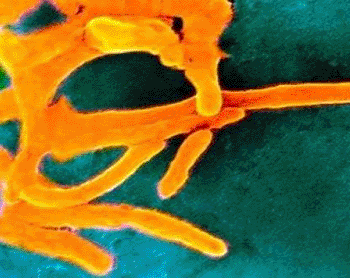Multiple Microbiological Tests Needed for Underweight Newborns
By LabMedica International staff writers
Posted on 04 Mar 2013
Cultures commonly used to detect bacterial infections in low birth-weight newborns with early onset sepsis may fail to detect some microorganisms.Posted on 04 Mar 2013
There is a need for multiple detection methods, such as DNA genomic analyses and other independent culture technologies, to identify bacteria that routine culturing may miss.

Image: The oral bacteria Fusobacterium nucleatum (Photo courtesy of HealthyDent).
Scientists at Case Western Reserve University (Cleveland, OH, USA) performed a comparative microbial analysis of paired amniotic fluid (AF) and cord blood (CB) from pregnancies complicated by preterm birth and early-onset neonatal sepsis. The biological samples from 44 women were collected from September 2004 to February 2009.
Amniotic fluid (AF) was cultured for aerobic and anaerobic bacteria, Ureaplasma and Mycoplasma species. DNA was extracted from AF or CB serum. To identify the species amplified by polymerase chain reaction (PCR) and to ensure that the PCR amplicons were indeed bacterial ribosomal ribonucleic acid (rRNA) genes rather than artifacts, the PCR products were cloned into the pCR8 vector (Invitrogen, Carlsbad, CA, USA).
The investigators found more than 20 bacterial species not discovered using standard culturing. Some of the uncultured species appeared in both the cord blood and amniotic fluid samples. The uncultured bacteria were detected with DNA genomic analysis that had been used in a prior study that discovered the link between oral bacteria that causes still- or premature-births due to infected amniotic fluid that is supposed to be a sterile environment.
Yiping Han, PhD, the professor of Periodontics and Reproductive Biology at the Case Western, said, "Culture independent technology has broadened our scope of understanding human pathogens. DNA testing techniques were able for the first time to detect the oral bacteria Fusobacterium nucleatum, Bergeyella, and Sneathia sanguinegens that brought on early neonatal sepsis and put newborns at risk of dying shortly after birth. Among these, F. nucleatum was found at the same high frequency as the well-known Escherichia coli, putting the former on the same importance scale as the latter." The study was published on February 20, 2013, in the journal Public Library of Science ONE.
Related Links:
Case Western Reserve University
Invitrogen










 (3) (1).png)


